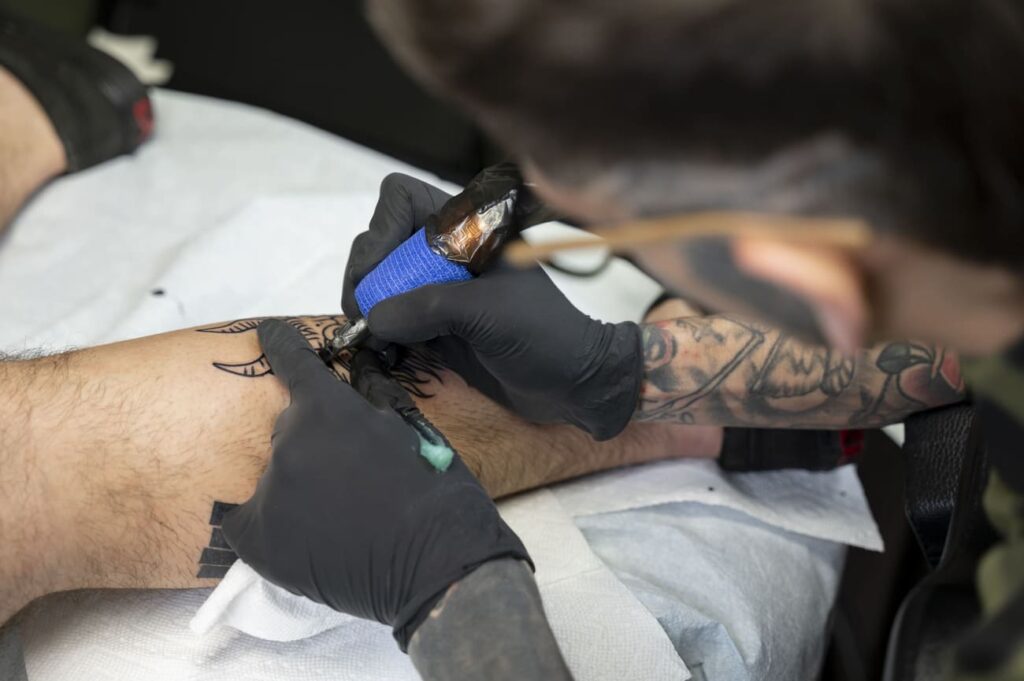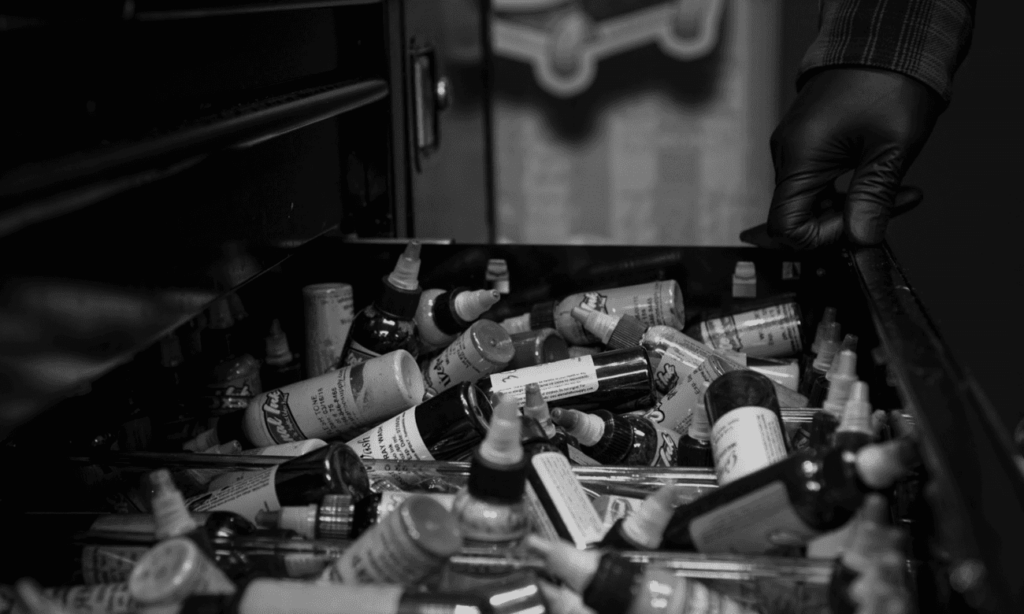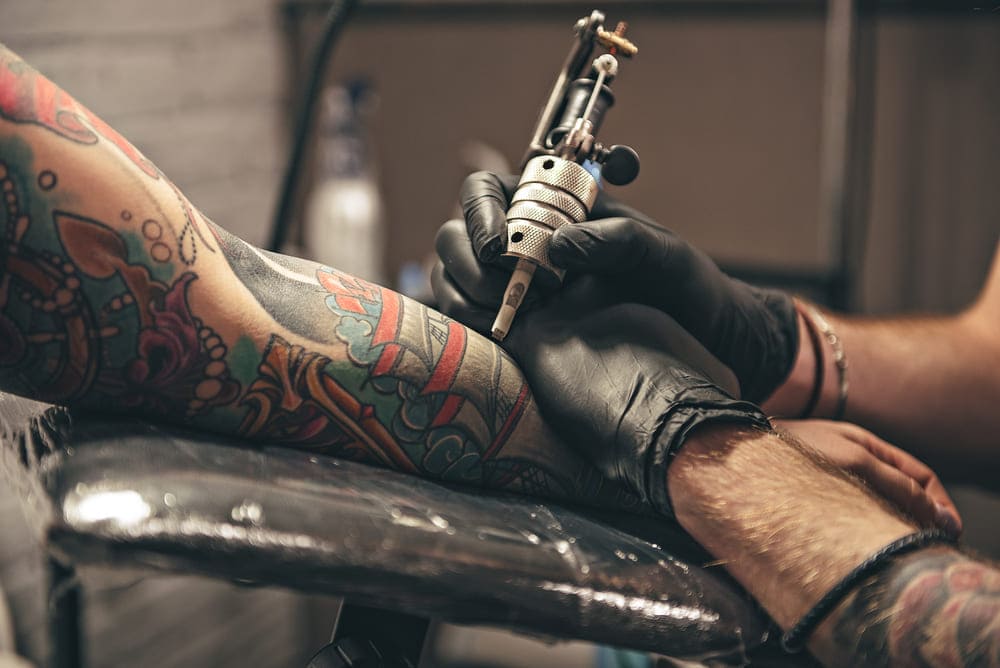If you’re new to tattooing, jumping right on to real skin can result in a few regrettable designs. This is why tattoo artists have created silicone practice skins. It mimics the feel of human skin closely enough that you can build your skills before making a permanent mark on yourself or others.
So, what do you need to start tattooing on practice skins?
Since you’re not working with real people yet and there’s no chance for cross-contamination, you can hold off on some equipment like Madacide disinfectant and disposable grips or an autoclave. However, you will need to be able to set up a small station:

1. Tattoo Machine + Power Supply
Get yourself a good tattoo machine and a power supply. Rotary or pen tattoo machines with a wireless power supply tend to be the most beginner-friendly and require the least amount of tuning.
Pro Tip: If you know tattooing is something you want to do long-term, getting a high-quality machine right off the bat might be worth the investment. It can be harder to learn on a low-quality machine because they don’t run as consistently and are usually limited to very low voltages.
2. Needle Cartridges
Most needle cartridges are compatible with most tattoo machine grips. (You just have to “click” it into place.) Since you’ll want to start with small tattoo designs, you’ll want to get smaller needles like 07 Round Liner and a 15 Curved Magnum.
Note: There are lots of product knock-offs online that might say they’re sterile, even if they’re not. When you’re working on real human skin, you should always buy tattoo needles directly from a reputable tattoo supplier to make sure your cartridges are properly sterilized. However, while working on fake skin, you can use materials from Amazon.
3. Tattoo Ink
If you’re just starting out, you don’t need to pay tons of money for a full set of ink. Go ahead and get a bottle of black ink so you can do linework and shading.
Note: Like with needles, you should always get ink directly from a reputable tattoo supplier to make sure you’re getting safe and sterile ink.
4. Fake skin
Your fake skin is your canvas. Because you want the silicone practice skin to mimic human skin, make sure to get a fake skin that is thick enough. (If your needle is going through the skin and hitting the table, the fake skin is too thin.)
5. Hand sanitizer or green soap
Fake skins can be a bit greasy. Hand sanitizer or green soap diluted in water will clean up the fake skin so that the stencil will stick better.
6. Speed Stick deodorant
When working on fake skin, you don’t need Stencil Stuff the way you would for real people. You can instead use Speed Stick deodorant to transfer the stencil to the skin.
Pro Tip: After applying the Speed Stick, allow it to dry just enough that it feels “tacky” before applying the stencil.
7. Stencil paper
Stencil paper is how you transfer designs onto your practice surface.
Pro Tip: Stencil paper is technically “thermal transfer’ paper. Applying the stencil and then placing your gloved hand atop it will provide some warmth and make the stencil transfer easier.
8. Vaseline
A little Vaseline on the skin makes it easier to glide your hand (so you can do straight lines) and helps prevent you from wiping away the stencil while you’re working.
Additionally, Vaseline takes extra ink and stencil off the skin when you’re done tattooing so your final product looks clean.
Warning: Don’t put too much Vaseline on your fake skin before tattooing, since Vaseline can clog your needles and prevent ink flow.
9. Miscellaneous
- Ink caps to hold your ink
- Paper towels to wipe away excess ink
- Cling wrap to protect your table
- Nitrile gloves to keep the stencil from staining your hands
Final Thoughts
In a nutshell, starting your tattooing journey means practicing first on fake skin. Using silicone practice skins lets you make mistakes without any permanent consequences, so you can learn to tattoo before trying on real people.
As you gather your equipment, remember that each piece is important for your growth as a tattoo artist.
So, enjoy learning, keep practicing, and have fun expressing yourself through your art. Getting the basics down will set you on the path to becoming a successful tattoo artist.

